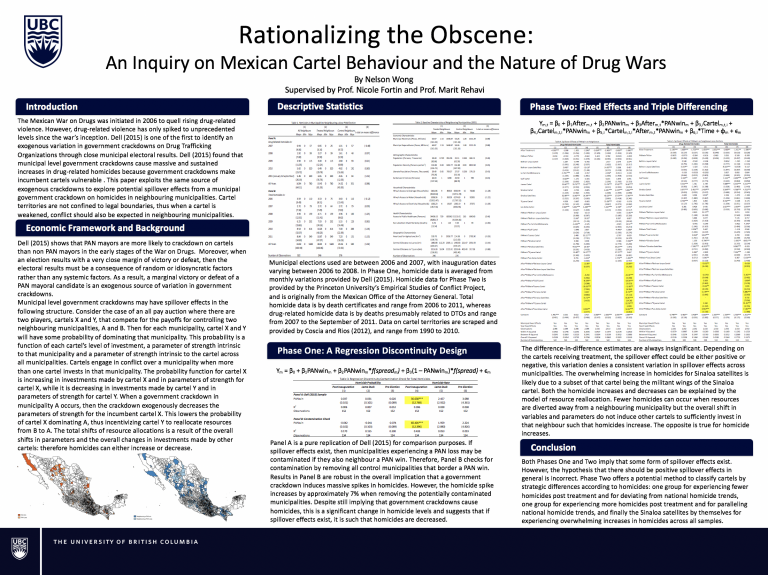Photo: Claudio Toledo / Flickr
VSE student research on Mexican drug cartels wins best undergrad paper in Canada
Ten years ago, the Mexican city of Ciudad Juárez was in the throes of a violent turf war. Bordering El Paso, Texas, the city was a key battleground for several drug cartels trafficking drugs into the U.S. In 2010, more than 3000 homicides were recorded. In contrast, San Diego, a city with a similar population, saw 29 homicides the same year.
Once hailed as the murder capital of the world, Ciudad Juárez was also part of recent undergraduate research at the Vancouver School of Economics at the University of British Columbia.
VSE’s Nelson Wong’s honours thesis examined government crackdowns on cartels and their potential spillover effects on neighbouring municipalities between 2006 and 2010, the early years of the Mexican War on Drugs.
Wong’s “narconomics” work – the economics of drug cartels – won him the best undergraduate research paper at the Bank of Canada Awards, presented at the 51st Canadian Economics Association Conference earlier this month.
“My theory was that a government crackdown on a cartel would incentivize rival drug organizations to move in on that weakened territory. If they did, they would have to reallocate resources from their home territory into this desired theatre of war,” said Wong. “Their ability to project power would decrease, leading to less crimes and homicides.”
But Wong’s research revealed this wasn’t always the case.
The positive or negative spillover effect of a government crackdown largely depended on the cartel itself. Some neighbourhoods next to crackdowns saw homicides fall, where others saw them rise.
In areas controlled by affiliates of the Sinaloa Cartel, the drug trafficking organization once headed by the infamous Joaquín “El Chapo” Guzmán, murder rates rose when a neighbouring crackdown took place. Homicides increased by approximately 30 drug-related homicides per year and approximately 65 total homicides per year. While other cartels – La Familia Michoacana, the Golf Cartel and the Juárez Cartel – saw a decrease in drug-related homicides in their territories.
“Homicide rates imply a cartel’s propensity to engage in conflict and their level of aggression,” said Wong. “The consequences of government crackdowns is contingent on what type of cartel is nearby.”





